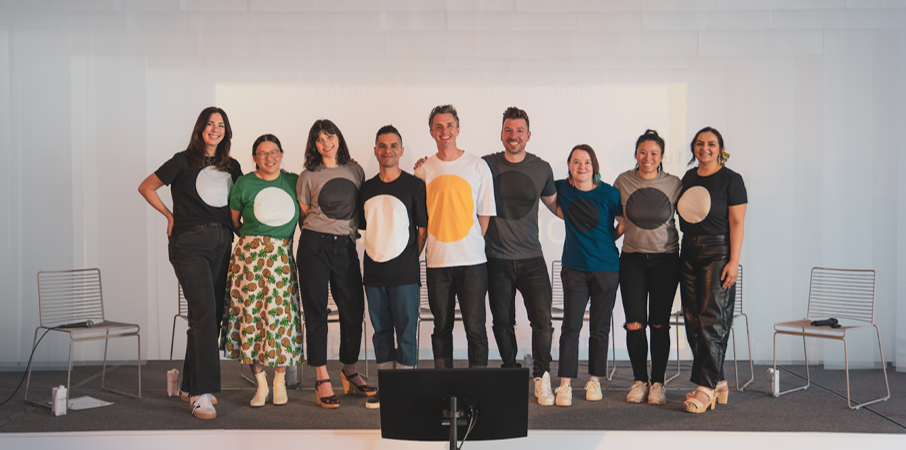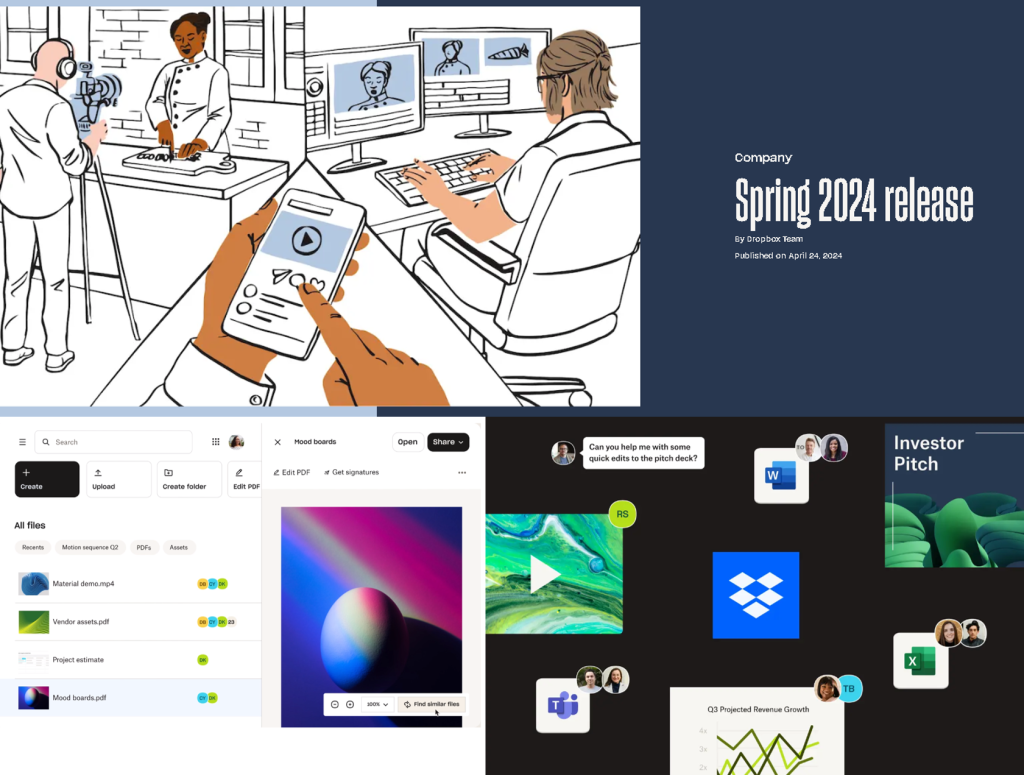Alastair Simpson is a leader and mentor, serving as VP of Design at Dropbox. In this role, he leads the talented and diverse Design team at Dropbox across Brand, Product Design, Writing, and Research.
He loves working with multi-disciplinary teams to solve complex business and customer challenges. His passion – turning human-centered design inward, to create the future of work. Which was a catalyst behind Dropbox’s innovative Virtual First approach to remote work. It also inspired the Virtual First Toolkit, developed to capture Dropbox lessons to help businesses navigate the dramatic shift in office work, since the invention of the 40-hour work week.
Prior to Dropbox, Alastair was Head of Design at Atlassian for six years. Where he helped scale the design team from 20 to over 250 employees, and the company from 900-5000 employees, as well as through a successful IPO. He has also worked with other large brands, start-ups, and scale-ups across the U.S., UK, Europe, Australia, and Southeast Asia.
Alastair earned an honors degree from Brunel University, London. Obtaining knowledge within consumer behavior, psychology, business studies, marketing, and sport sciences. Alastair is a father, and currently living in the Bay Area with his wife and two kids, Frankie and Buddy, ages 9 and 7, who are a daily source of inspiration, pride, and learning. He’s also quite proud of his ever-growing tee-shirt collection.

1. What design trends do you think will take off this year and more in the future?
I think we’ll see a strong return of focus on the craft of design, and building quality products. For me, quality is a way of working. At the heart of that way of working is a focus on the foundational skills of the craft of design. For the last two decades, design as a discipline has sprawled -and the focus has been on scaling teams, turning design into a factory-like operation (in tandem, removing judgment, and taste from the process), and letting metrics alone define what we think great products look like. We lost our focus on the foundational aspects of our craft. And the result is that many products work just okay, and everything looks and feels very homogenous.
From this shift, I believe we’ve lost our way and no longer build products with a high degree of care or craft. We no longer build teams around a strong ethos of craft, which is needed to deliver quality products. And as we’ve scaled so fast, we’ve lost the true skills around the craft needed to deliver great products.
When you think about a physical or digital product that you truly love, you probably have that connection due to the designer who built it. They understood the skills underpinning their craft, and cared enough to make it special. They understood that they had a responsibility to make something that worked and mattered for their customer. We want more of this. I, therefore, think we’ll see the return of that strong focus on the craft of design and building quality products.

2. When it comes to making design and the design industry more diverse, equal, and inclusive, what changes are needed or would you like to see?
If companies haven’t explored the benefits of remote and distributed work yet, it’s time. At Dropbox, we have our remote-first operating model called Virtual First which I helped bring to life in 2020. Through this model and the move to remote work, we’re able to unlock pools of talent that were previously only found in the traditional tech hubs. Now we can tap into a more global, diverse talent base who really spark innovation, bring creativity to the table, and make us a better team. Our employees love the model because it combines the best of remote work with real in-person connection, which we know there is no substitute for. Our model also allows employees to design their workdays in a way that works best for them, and we have guidelines around when there is time for collaborating live with our colleagues, and other times can be used for deep, solo work. Because of the blend of remote and in-person, and our focus on true flexibility, we’ve found 90% of employees are satisfied with their ability to choose both when and where they work. They also report feeling more impactful, balanced, and productive, and that Virtual First helps them work more effectively than they would in an office.
Thinking of the design industry overall, it’s important to prioritize how we proactively grow the next generation of design leaders. Not only should we focus on growing representation in early career designers and monitoring our team makeup to ensure it’s representative across levels, but early career mentorship is key. Personally, mentorship has always been important to me, as I benefited from this greatly early on in my design career. I can recall just starting out in the industry, making tons of mistakes and learning as I was doing. At the time, I built my own usability testing lab in our office, but I got a great deal of advice and direction from a local Australian researcher who had her own company and was generous enough to let me ask her questions, absorb and learn from her. Even now as a VP of Design, I’m a part of a small group of peer design leaders from other large tech companies who offer support and guidance to one another, which has been so valuable. And as much as possible, I try to give back to the design community by running events like bi-quarterly external mentoring circles with URM designers – get in touch if you’d like to be added!

3. What are 2 things you were not taught in school (if you were formally trained in design) that you wished you had been taught?
Firstly, communication: I talk a lot about communication as a discipline with anyone that I coach or mentor. Communication is an art that I don’t believe we’re truly taught in school. Understanding the psychology behind how people communicate is incredibly important to our work, as well as understanding that communication and listening go hand in hand. When building for our customers, we have to listen and ask ourselves, why are we listening – are we listening to learn, to win, or are we listening to fix? We must be curious in this phase and truly listen to learn, and then apply those insights to our design.
Also, creating the best design doesn’t mean it will actually ship. However, effective communication and networking can positively impact this. Strong relationships with your peers in all areas of the business, like engineering, product, marketing, and other cross-functional teams, are just as powerful when it comes to actually shipping amazing design solutions.
Secondly, trust and teamwork: Closely linked to the importance of communication is the ability to build trust with peers and teams that you work with. Throughout my career, I’ve often been asked how to build trust with colleagues or with different teams. We don’t generally talk about how to build trust, and I find that it has taken on the form of some mythical and hard-to-define concept. When, in my honest opinion, the reality is very different.
I think about trust in three simple vectors: Credibility deals with our knowledge or expertise – is what we’re saying backed by data, or solid first-hand experience? Reliability deals with our actions and our ability to deliver on commitments – do we follow through as promised? And lastly, showing that you care deals with vulnerability, how well we are known by others and how much interest we take in our coworkers – do we ask genuine questions about our co-workers to better know and understand them? If you can get all of these things right, then you will be on your way to building trust with your teammates and within your organization.

4. What are the biggest challenges you’ve had to face as a designer? Did you overcome them? How?
The biggest realization I’ve had thus far is as you get further into your career journey, the hard skills are mostly the same. The real challenge becomes more around managing and developing yourself as a person, not just as a professional. This includes a variety of things, like dealing with stress in a positive way, staying healthy in both body and mind -and creating necessary boundaries. The more senior your position, the bigger the impact is from the decisions you have to make. As a senior leader, I probably only make three to five key decisions per year, but those decisions have multi-year impacts. Frankly, I need to be getting them right more often than getting them wrong, which naturally is quite stressful.
Learning to manage yourself at any level is critical, to avoid burnout and show up as your best self, but the further you grow in your career, the more critical this becomes. Earlier on, I used to think that senior folks just had it “figured out” and mastered all of these things effortlessly. Now through experience, I’ve learned having it “figured out” actually takes intention and effort. I have the notion of having “Team Alastair” around me, including a therapist, executive coach, personal trainer, mentors, and a partner who all help me maintain balance so that I can maintain peak-level performance. It’s analogous to a professional sports team that has these people around them to help give them the extra 1%. But regardless if you have a team around you, it’s integral to figure out what makes you tick, whether that be exercise, meditation, hobbies, or community, and you have to make time in your schedule for that.

5. Why do you think Design Matters?
To quote the great Robert L. Peters, “Design creates culture. Culture shapes values. Values determine the future.”

* * *
Do you want to hear more from Alastair? He will give a talk at the digital design conference Design Matters 24, taking place in October 2024. Get your ticket to the event here. Connect with Alastair on X @alanstairs or via LinkedIn.
Don’t forget to check out the new spring release by the Dropbox Team.











